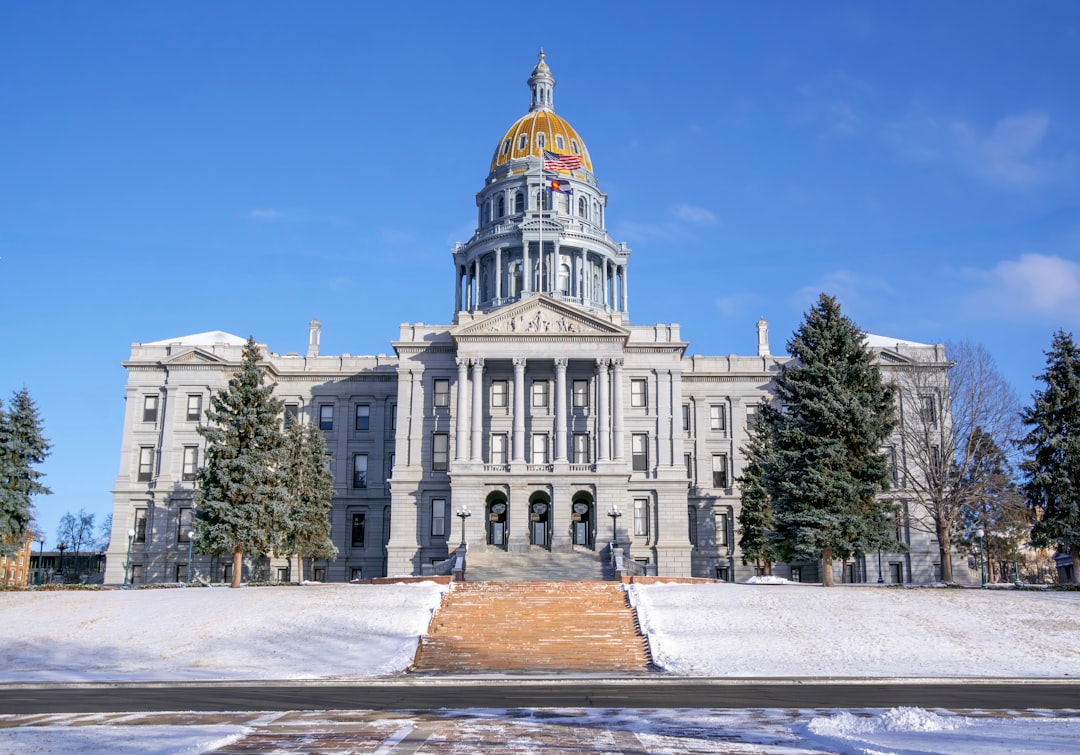- The Deep View
- Posts
- ⚙️ OpenAI's Superalignment team implodes; safety research wasn't a priority
⚙️ OpenAI's Superalignment team implodes; safety research wasn't a priority

Good Morning, and happy Monday. Last week, I chatted with Kian Katanforoosh, an award-winning computer scientist who has worked closely with Andrew Ng, a celebrated pioneer in the AI space.
Katanforoosh’s great passion is teaching people about AI at a time when technological skill sets must be more rapidly evolving than ever before. Read on for the full story.
In today’s newsletter:
⛑️ Jan Leike says safety wasn’t a priority at OpenAI
🛜 The FTC has a few questions about AI
🏛️ Colorado signs first comprehensive U.S. AI legislation
🏦 Exclusive Interview: Deeplearning.ai founding member on the importance of regulation for job creation

Jan Leike says AI safety wasn’t a priority at OpenAI

Image Source: OpenAI
In the wake of OpenAI’s recent exodus of safety researchers, former Superalignment co-lead Jan Leike posted a viral thread explaining why he left: a growing disagreement with company leadership over OpenAI’s core priorities.
“Over the past few months my team has been sailing against the wind,” he wrote. “Sometimes we were struggling for compute and it was getting harder and harder to get this crucial research done.”
“Over the past years, safety culture and processes have taken a backseat to shiny products.”
OpenAI later dissolved its Superalignment team entirely. Reports, meanwhile, of a culture of broken trust regarding safety efforts at OpenAI have proliferated, with former employees too afraid to share their names due to a non-disparagement agreement (tied to their equity) that Sam Altman claimed he knew nothing about.
Now we know what Jan saw ... Do you trust OpenAI? |
The FTC has a few questions about AI

Image source: Unsplash
The Federal Trade Commission’s Office of Technology (OT) last week highlighted eight “questions of interest” regarding AI. The OT’s goal at this time is to simply learn more about these specific areas:
AI & Fraud
How does AI supercharge fraud (it does, through enhanced speed, scale and personalization), what safeguards are there to protect against this and are those safeguards at all effective?
AI & Competition
How are firms with market power & vertically integrated tech stacks leveraging that power in the AI sector?
Algorithmic Pricing
How are companies using AI to fix prices?
Surveillance & Data Privacy
What is the scope and scale of first-party data collection?
Data Security
How common are security vulnerabilities within LLMs?
Open Models
How do models with open weights impact competition?
Platform Design
How are design choices by social media/gaming platforms exacerbating or mitigating problematic usage or other mental health harms?
Digital Capacity
How can we cultivate a pipeline of tech skills that can be translatable to tech policy?
Together with Zaplify
Need more prospects? Try this new AI Sales Assistant
Spam filters. Irrelevant LinkedIn InMail templates. Obvious automated follow-ups that don’t work.
If you’re ready to ditch the {insert_first_name} tags for real results, try Zaplify’s new AI Sales Assistant.
Pairing human touch with a savvy AI, this tool helps find your next prospect, engage meaningfully, and retain relationships – all in one platform.
Start by searching from 450 million people, and the AI Sales Assistant will…
Suggest similar people worth pursuing
Draft hyper-personalized messages based on prospect’s profile/background
Revive old leads and make you reach a new level of reply rates
Plus, it unifies your LinkedIn and email chats so you never lose a prospect again.
Join the waitlist and be the first to experience the future of authentic outreach.
Colorado enacts first piece of U.S. AI legislation

Image Source: Unsplash
Colorado Gov. Jared Polis on Friday signed the Consumer Protections for AI bill into law. This marks the introduction of the first piece of comprehensive U.S. AI legislation. It won’t enter into force until February 2026.
The bill is specifically focused on preventing discrimination, and targets developers of high-risk systems, which it defines as any system involved in making “consequential decisions.”
Key Points:
Developers and deployers (doing business in Colorado) must use “reasonable care” to protect consumers from “known or reasonably foreseeable” risks of algorithmic discrimination.
Developers of high-risk systems must provide deployers with information & disclosures regarding the models, including a summary of data used to train the model and potential biases.
Deployers must conduct regular impact assessments.
The Colorado Tech Association is (not surprisingly) unhappy with the legislation. Polis isn’t thrilled with it either; he signed “with reservations,” and noted concern about how it might impact the tech industry.
The Future of Privacy Forum, meanwhile, called it a “watershed moment.”

💰AI Jobs Board:
Data Scientist: Compunnel· United States · Hybrid; Sacramento, CA · Full-time · (Apply here)
Quantum Research Scientist: IBM · United States · Yorktown Heights, NY · Full-time · (Apply here)
Staff AI Linguist: LinkedIn · United States · Hybrid; Mountain View, CA · Full-time · (Apply here)
🔭 Tools: *
Enquire PRO: This human + AI platform helps you save time and money, while solving big problems at work.
By empowering you to connect and collaborate with the right experts in any industy or location, you can make better decisions, faster.
🌎 The Broad View:
*Indicates a sponsored link
Together with Sana
Work faster and smarter with Sana AI
Meet your new AI assistant for work.
On hand to answer all your questions, summarize your meetings, and support you with tasks big and small.
Try Sana AI for free today.

Deeplearning.ai cofounder on the importance of regulation for job creation

Created with AI by The Deep View.
Kian Katanforoosh – who co-created Stanford’s deep learning class before becoming a founding member of deeplearning.ai (all alongside renowned computer scientist Andrew Ng) – has one big concern when it comes to AI: that the workforce will get left behind.
I had asked him what his single greatest AI-related concern is; his answer —without hesitation — had nothing to do with unfounded fears of a singularity, or of active AI-related harms. Instead, his concern is “that the gap between the techies and the rest is going to keep growing.”
But he remains excited by the fact that companies outside of the tech space haven’t given up efforts to upskill and train their workers. This, he said, is the “right way to go.”
“I don’t think we need everyone to be a data scientist,” he said, adding that instead of abandoning their areas of expertise, people should work to “learn AI and bring it to your space.”
A key element of this sweeping upskilling effort that Katanforoosh believes is so important involves smart regulation, something that he said could act as an “incredible vehicle of job creation.” (Other experts in the field, including Dr. Suresh Venkatasubramanian, have told me similar things about regulation and job creation).
Citing Europe’s GDPR regulation, which is estimated to have created around 500,000 jobs, Katanforoosh said that regulation forces companies to think longer term, which is a huge win for the workforce.
He said that responsible AI regulation would create a whole new set of jobs in measuring, evaluating and red-teaming AI models.
He said that such regulation would force “us to upskill the workforce to a point that it will help us in the future.”
And when such regulation does (hopefully) come around, Katanforoosh hopes that it will additionally address growing monopolies in the sector, something he is already seeing (& something the FTC is curious about, as I mentioned above).
Katanforoosh sees the AI market as consisting of three layers: infrastructure, foundation model and application. The first two layers, he said, are already dominated by a few companies; Nvidia and the cloud providers in the first and Big Tech in the second.
“I just really hope that the type of monopolies we're seeing in the first two layers are not going to happen in the third layer, because I think it will create issues later on for this entire ecosystem,” he said.
“I'm worried that without the right regulations, the app layer is going to just be deferred to Big Tech, and that's going to create a less innovative and less progressive ecosystem.

OneNode: An AI-powered note-taking app.
Breezemail: An AI-powered tool for organizing your email inbox.
aiPDF: An AI-powered tool for summarizing documents.
Have cool resources or tools to share? Submit a tool or reach us by replying to this email (or DM us on Twitter).
*Indicates a sponsored link
SPONSOR THIS NEWSLETTER
The Deep View is currently one of the world’s fastest-growing newsletters, adding thousands of AI enthusiasts a week to our incredible family of over 200,000! Our readers work at top companies like Apple, Meta, OpenAI, Google, Microsoft and many more.
One last thing👇
Redefining the boundaries of human capability requires pioneers.
If you have quadriplegia and want to explore new ways of controlling your computer, we invite you to participate in our clinical trial.
— Neuralink (@neuralink)
8:45 PM • May 16, 2024
That's a wrap for now! We hope you enjoyed today’s newsletter :)
What did you think of today's email? |
We appreciate your continued support! We'll catch you in the next edition 👋
-Ian Krietzberg, Editor-in-Chief, The Deep View







